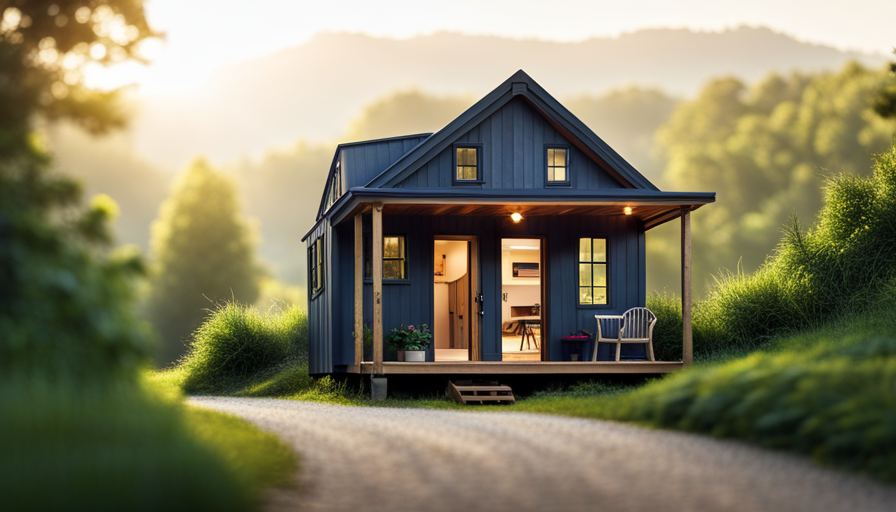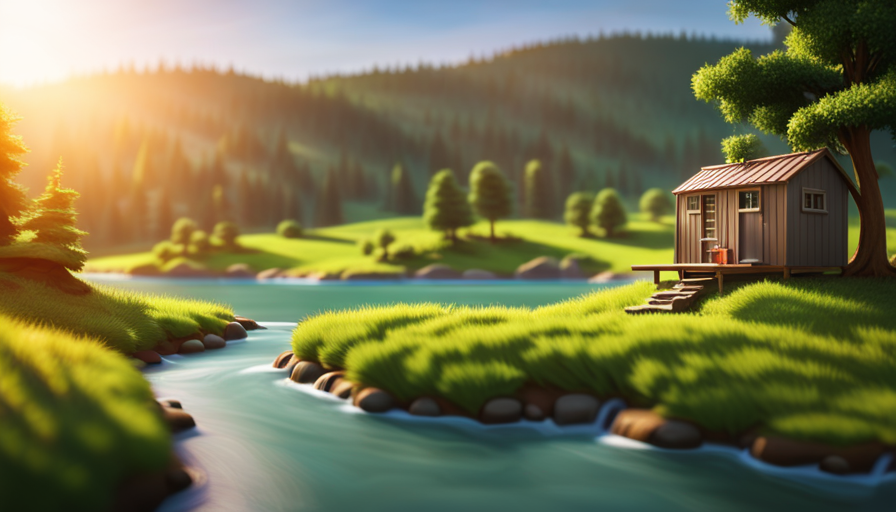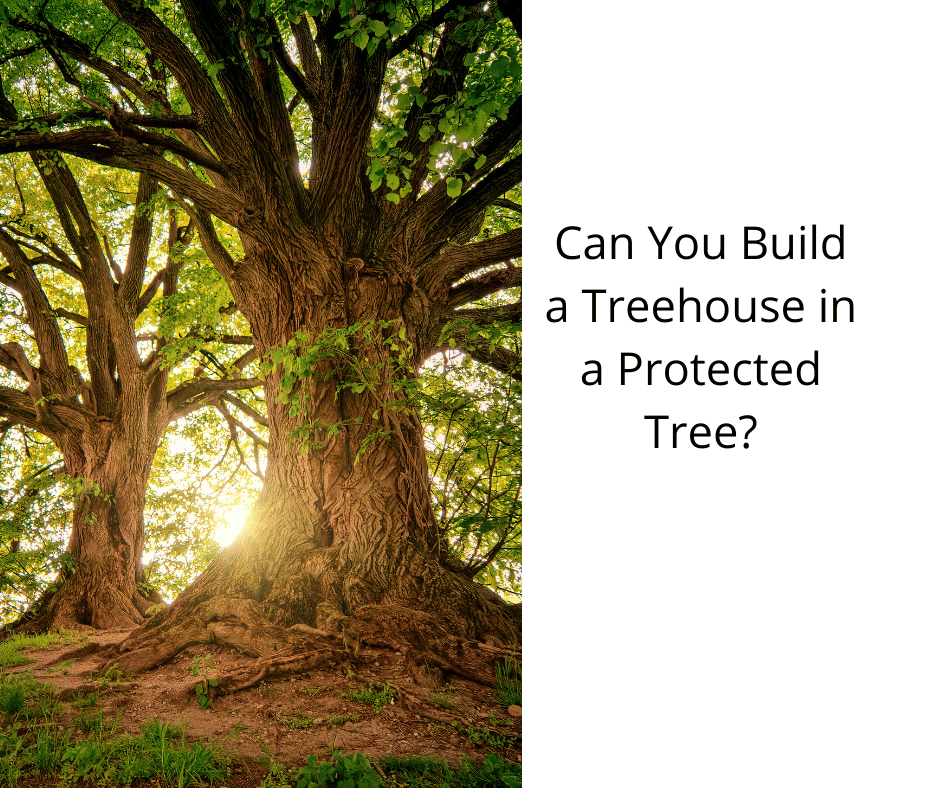Welcome to the amazing world of tiny homes! If you’re anything like me, the idea of minimalist living and decreasing your environmental impact has captivated you. But before you start your journey to a tiny home, you may be wondering, “Where can I park my tiny house?” Don’t worry, because I’ve done the research and am here to help guide you through this process.
Finding the perfect spot for your tiny house can be a challenge, but fear not, fellow tiny house enthusiasts! Whether you’re looking for a tiny home community, a backyard setting, or a unique alternative location, there are plenty of options available to you.
In this article, we will explore the ins and outs of zoning laws, renting or purchasing land, RV parks and campgrounds, and even backyard and granny flat options. We’ll also discuss the importance of consulting with local building officials and staying informed on tiny home regulations.
So, let’s dive in and find the perfect place to call home for your tiny house dream!
Key Takeaways
- Research local zoning laws to find legal parking options for a tiny house.
- Consider renting or purchasing land to create a personal oasis in a tight-knit community.
- Utilize existing infrastructure and services when finding a spot for a tiny house.
- Networking with professionals in the industry can help find the perfect location for a tiny house.
Research Local Zoning Laws and Regulations
You’ll need to research local zoning laws and regulations to find out where you can legally park your tiny house. It’s like a detective scouring through a maze of paperwork to uncover hidden clues. Researching local laws is crucial because each municipality has its own rules regarding where tiny houses can be located. Some areas may allow tiny houses to be classified as accessory dwelling units, while others may require them to be situated on specific types of properties. By researching local laws, you can ensure that you are in compliance with all regulations and avoid any potential legal issues.
Once you have a solid understanding of the laws, you can start finding suitable locations for your tiny house. This could include finding tiny home communities and villages, where like-minded individuals come together to create a supportive and sustainable living environment.
Find Tiny Home Communities and Villages
Discover vibrant communities and charming villages that welcome and embrace the unique allure of tiny homes. These communities aren’t just a place to park your tiny house, but also a chance to connect with like-minded individuals who value simplicity and sustainable living. Many of these communities offer amenities such as communal gardens, shared spaces, and even tiny home financing options to make your dream of living in a tiny house a reality.
Additionally, living off-grid is a popular choice among tiny house enthusiasts, and these communities often provide the perfect opportunity to experience the benefits of off-grid living. From solar power to rainwater collection systems, you can explore sustainable living practices while enjoying the support and camaraderie of your tiny home community.
Consider renting or purchasing land in these communities to create your own personal oasis while being part of a larger, tight-knit community.
Consider Renting or Purchasing Land
Consider renting or purchasing a plot of land to establish your own personal sanctuary, where the serenity of nature meets the charm of tiny living. When it comes to finding land for your tiny house, there are several options to consider.
Renting land allows for flexibility, as you can try out different locations and move if needed. Many landowners are open to renting out their property to tiny house owners, so it’s worth exploring this option.
On the other hand, purchasing land gives you the freedom to customize your space and build a more permanent home. It also provides a sense of stability and the opportunity to invest in your own property.
Whether you choose to rent or purchase, make sure to research zoning laws and regulations to ensure your tiny house is allowed.
Now, let’s explore RV parks and campgrounds to expand your options for placing your tiny house.
Explore RV Parks and Campgrounds
When it comes to finding a place to put my tiny house, one option I’m considering is exploring RV parks and campgrounds.
These locations offer the advantage of existing infrastructure and services, such as electricity, water, and waste disposal, which can make living in a tiny house much more convenient.
Additionally, by choosing to live in an RV park or campground, I can enjoy the benefits of community living, connecting with like-minded individuals and potentially participating in shared activities and amenities.
Take Advantage of Existing Infrastructure and Services
Make sure to utilize the existing infrastructure and services around you when finding a spot for your tiny house, so you can fully enjoy the conveniences they offer.
When considering where to put your tiny house, it’s important to research local zoning laws to ensure compliance.
One option is to look for existing tiny home communities that provide a supportive network and amenities such as water, electricity, and waste disposal.
Another option is to rent or purchase land in areas that allow tiny houses.
RV parks and campgrounds can also be great options, especially if you value mobility and flexibility.
Additionally, exploring backyard options or considering granny flat options can provide a sense of community while still maintaining some independence.
To find alternative locations, it’s helpful to network with the community, attend events, and connect with other tiny home dwellers.
Stay informed about building officials’ regulations to ensure a smooth process.
By utilizing existing infrastructure and services, you can enjoy the benefits of community living in your tiny house.
Enjoy the Benefits of Community Living
Immerse yourself in the benefits of community living and embrace the sense of belonging that comes with sharing resources and experiences with like-minded individuals. Living in a community of tiny house enthusiasts offers a unique opportunity for community support and the chance to tap into a wealth of shared resources.
From shared gardens and communal spaces to carpooling and tool libraries, community living allows you to maximize the benefits of living in a tiny house. Need a helping hand with a construction project or advice on sustainable living? Your neighbors are there to lend support and share their expertise. By fostering connections with others who share your values, you can create a strong network of support that will enrich your tiny house experience.
In the next section, we will explore the option of backyard and granny flat living, which provides another avenue for finding a place to put your tiny house.
Look into Backyard and Granny Flat Options
If I want to explore backyard and granny flat options, where can I put my tiny house? Well, there are a few things to consider.
First, you’ll need to research backyard regulations in your area to ensure that it’s legal to place a tiny house on your property. Some cities have specific rules regarding setbacks, size limitations, and even aesthetics.
Second, financing options may be available to help you fund the construction of a backyard or granny flat. This could include personal loans, home equity loans, or even crowdfunding.
Lastly, it’s important to think about the practicality of placing a tiny house in your backyard. Consider factors such as access to utilities, privacy, and any potential impact on your neighbors.
If backyard and granny flat options don’t align with your needs, you may want to consider tiny home on wheels (THOW) options.
Transitioning into the next section, let’s explore the benefits of a more mobile tiny house.
Consider Tiny Home on Wheels (THOW) Options
When considering tiny home options, one key point to explore is the concept of a Tiny Home on Wheels (THOW). These mobile homes offer the advantage of mobility and flexibility, allowing you to easily move your home to different locations as needed.
With a THOW, you have the opportunity to take advantage of travel and adventure, exploring new places and experiencing different environments without ever having to leave the comforts of home. Whether it’s a weekend getaway or a long-term road trip, a THOW provides the freedom to go wherever your heart desires.
Take Advantage of Mobility and Flexibility
One way to fully maximize the benefits of your tiny house is by embracing its mobility and flexibility. By choosing a Tiny Home on Wheels (THOW), you can experience the freedom of living wherever you want, whenever you want.
Embracing minimalism in a tiny house allows you to focus on what truly matters, eliminating clutter and unnecessary possessions. Living in a mobile tiny home does come with its challenges, such as finding suitable parking spots and dealing with zoning regulations. However, with careful planning and research, these obstacles can be overcome.
It’s important to stay informed about local laws and regulations, as well as building codes, to ensure a smooth experience. By taking advantage of the mobility and flexibility of a THOW, you can explore travel and adventure opportunities, discovering new places and experiences without being tied down to a specific location.
Explore Travel and Adventure Opportunities
After exploring the benefits of mobility and flexibility in placing my tiny house, I’m now ready to delve into the exciting world of adventure travel and tiny house living.
With a tiny house, I can embark on thrilling journeys, discovering new places and experiencing different cultures. The possibilities are endless as I can park my tiny house in stunning natural landscapes, near picturesque beaches, or even in bustling cities.
Adventure travel and tiny house living go hand in hand, allowing me to have the freedom to explore the world while still having a cozy and comfortable home to return to. So, whether it’s hiking through majestic mountains, surfing in exotic locations, or simply immersing myself in vibrant city life, my tiny house will be my perfect companion.
Now, let’s dive into the next section and consult with local building officials and experts to ensure a smooth process.
Consult with Local Building Officials and Experts
Consulting with local building officials and experts can provide valuable insight into the best locations for placing your tiny house. These professionals have extensive knowledge about local zoning regulations, building codes, and land use restrictions, which are crucial factors to consider when finding a suitable spot for your tiny home.
They can guide you on the necessary building permits you may need and help you navigate through the legal process. Additionally, some building officials may even offer consultation services specifically tailored to tiny house owners, providing personalized advice and recommendations.
By seeking their expertise, you can ensure that you are choosing a location that meets all the necessary requirements and is safe and legal for your tiny house. With this knowledge in hand, you can confidently explore unique alternative locations for your tiny home, such as remote wilderness settings or eco-friendly communities, knowing that you have followed the proper steps.
Explore Unique Alternative Locations
To truly immerse yourself in the tiny house lifestyle, consider venturing beyond traditional residential areas and exploring unique alternative locations that offer a sense of adventure and sustainability.
Alternative housing options are becoming increasingly popular, and they provide an opportunity to live off the grid and reduce your environmental impact. One option is to find land in rural areas or on the outskirts of town where zoning laws may be more lenient and open to tiny house living.
Another option is to look for eco-villages or intentional communities that prioritize sustainable living and welcome tiny homes. These communities often offer shared resources such as gardens, workshops, and renewable energy systems. By embracing these alternative locations, you can create a lifestyle that aligns with your values and allows you to live more sustainably.
Transitioning into the next section about networking with the tiny home community, you can connect with others who have found their own unique locations and gain valuable insights.
Network with the Tiny Home Community
When it comes to building and living in a tiny home, networking with the tiny home community is essential. Attending tiny home events and workshops is a great way to connect with like-minded individuals and gain valuable knowledge about the tiny home lifestyle.
Additionally, reaching out and connecting with experienced tiny home dwellers can provide invaluable insights and advice for successfully navigating the challenges and joys of living in a tiny home.
Attend Tiny Home Events and Workshops
Attending tiny home events and workshops is like opening a door to a world of endless possibilities for finding the perfect spot to put your tiny house. It’s a great way to connect with like-minded individuals and gain valuable insights from experienced tiny home dwellers.
Here are some ways attending these events can help you in your search:
-
Attend tiny home festivals: These events bring together tiny house enthusiasts, builders, and vendors, providing a wealth of information and inspiration.
-
Join online tiny house forums: Participating in online communities allows you to connect with people who’ve already gone through the process of finding a place for their tiny homes and can offer valuable advice.
-
Learn about zoning and regulations: Workshops often cover topics such as zoning laws and building codes, helping you navigate the legal aspects of tiny house placement.
-
Discover alternative living options: Events and workshops showcase various alternative living communities and land-sharing opportunities that may be suitable for your tiny home.
-
Network with professionals: You can meet professionals in the industry, such as real estate agents and land developers, who can help you find the perfect location for your tiny house.
By attending these events and workshops, you’ll gain knowledge, connections, and ideas that’ll guide you in your search for the ideal spot to park your tiny house.
Connect with Experienced Tiny Home Dwellers
Connect with experienced tiny home dwellers to gain valuable insights and learn from their experiences, helping you in your search for the perfect spot for your compact dwelling. By connecting with experienced tiny home builders, you can tap into their knowledge of the best locations for tiny houses. They can provide recommendations based on factors such as zoning regulations, access to utilities, and community acceptance.
Additionally, they may have information on affordable tiny home financing options, making it easier for you to secure the necessary funds for your project. Engaging with these experts can save you time and effort in your search for the ideal location.
Stay informed and updated on tiny home regulations, ensuring that you are aware of any changes or restrictions that may impact where you can place your tiny house.
Stay Informed and Updated on Tiny Home Regulations
To stay informed and updated on tiny home regulations, it’s important to keep yourself in the loop so you can find the perfect place to put your tiny house. Researching legal restrictions is crucial to ensure that you comply with local laws and regulations.
Different areas may have specific zoning requirements or building codes that you need to be aware of before placing your tiny home. It’s essential to research and understand these restrictions to avoid any potential legal issues down the line.
Additionally, finding suitable land options is another aspect to consider. Some areas may have communities or developments specifically designed for tiny homes, while others may allow accessory dwelling units on existing properties.
By staying informed and updated on the latest regulations, you can make informed decisions and find the ideal location for your tiny house.
Frequently Asked Questions
Can I legally live in a tiny house in my city?
Yes, you can legally live in a tiny house in my city! There are numerous advantages of living in a tiny house, such as reduced expenses, minimal maintenance, and a smaller carbon footprint.
When searching for the perfect location, consider factors like zoning regulations, access to utilities, and proximity to amenities. It’s important to research local laws and consult with the city planning department to ensure compliance.
Are there any restrictions on the size or design of a tiny house in my area?
There may be restrictions on the size or design of a tiny house in your area. It’s important to check with your local zoning laws and building codes to ensure compliance.
Tiny house design trends often focus on maximizing space and efficiency, with features like multi-functional furniture and clever storage solutions.
Living in a tiny house can offer benefits such as reduced costs, a smaller environmental footprint, and a simpler lifestyle.
Can I park my tiny house on a friend’s property without violating any regulations?
Sure, you can totally park your tiny house on a friend’s property without violating any regulations!
When it comes to parking options, you’ll want to check the zoning guidelines in your area. Some places may have restrictions on how long you can park a tiny house on someone else’s property, so it’s important to be aware of those rules.
However, as long as you comply with the zoning guidelines, parking on a friend’s property is a great option for tiny house living!
Are there any specific regulations for tiny houses on wheels in my region?
There are specific regulations for tiny houses on wheels in my region. When it comes to parking options, it’s important to consider zoning regulations. These regulations dictate where you can legally park your tiny house on wheels.
Some areas may allow parking on residential properties, while others may require you to park in designated tiny house communities or RV parks. It’s essential to research and understand the zoning regulations in your specific region to ensure compliance.
How can I find out about any changes or updates to the regulations regarding tiny houses in my area?
Finding information about any changes or updates to the regulations regarding tiny houses in my area can be done by utilizing local resources. I recommend checking with your local planning department or zoning board as they’re typically responsible for enforcing and updating the regulations. They can provide you with the most accurate and up-to-date information regarding any changes or updates to the regulations that may affect where you can legally place your tiny house.
Conclusion
In conclusion, finding a place to put my tiny house requires thorough research and consideration.
By researching local zoning laws, exploring tiny home communities, and consulting with building officials, I can find suitable options for my tiny home.
Additionally, renting or purchasing land, looking into backyard and granny flat options, and exploring alternative locations such as RV parks and campgrounds can provide unique opportunities.
By networking with the tiny home community and staying informed on regulations, I can ensure a secure and fulfilling home for my tiny house.
Hi, I’m Emma. I’m the Editor in Chief of Tiny House 43, a blog all about tiny houses. While tree houses are often associated with childhood, they can be the perfect adult retreat. They offer a cozy space to relax and unwind, surrounded by nature. And since they’re typically built on stilts or raised platforms, they offer stunning views that traditional homes simply can’t match. If you’re looking for a unique and romantic getaway, a tree house tiny house might just be the perfect option.










